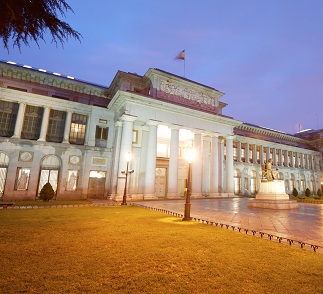Protecting cultural heritage in Europe

Related topics
Innovation European Research infrastructures, incl. e-infrastructures Belgium France Germany Greece Hungary Italy Netherlands Poland Portugal Spain United KingdomIn order to help bring about a more universal understanding of the problems of art conservation and restoration, the European Union (EU)-funded project CHARISMA was dedicated to the conservation of the European cultural heritage. The project team brought together experts from a range of disciplines, including prestigious European museums, universities and research institutes, who shared information about conservation techniques and collaborated to develop new ones.
“CHARISMA project holds great value for the European citizens,” according to project coordinator Professor Brunetto Giovanni Brunetti. He strongly believes that scientific innovation in diagnostics and maintenance could lead to significant improvements in the fields of conservation and restoration. These improvements have contributed to the development of new techniques, based predominantly on the prevention of damages and alterations rather than on efforts to repair damages already occurred.
''The project results are expected to play a significant role in cultural heritage research and have a genuine impact on policymakers, researchers, academics and SMEs producers in the heritage community," adds Professor Brunetti.
The project has achieved significant results. The access to the new tools developed by the research team allows conservators and restorers to identify the materials and methods used by the original artist, while the application of modern techniques and advanced tests ensure that the restoration work respects the principles of durability and compatibility.
In addition, using the new tools to investigate artworks offers art-historians and archaeologists novel ways to develop their research by revealing what lies below the surface or inside the artwork that is not visible to the naked eye. Various works can be analysed, monitored and tested using this technique, including paintings, sculptures, metal works, ceramics, manuscripts, printed books and archaeological items.
At the same time, CHARISMA research results contributed to changing the culture of the scientific community towards conservation and thus ensuring the survival of the European cultural heritage for future generations. “The collaboration between Europe’s museums and university laboratories, which was made possible by the CHARISMA project, has led to new, creative ways of working and has reinforced professional ties between peers in cultural heritage research,” says Professor Brunetti. Most importantly, this process has helped consolidate the role that Europe holds in the field of conservation in an international context.
"The application of the CHARISMA scientific results, such as the new conservation methods and diagnostic tools, has a distinct pan¬-European dimension, since heritage is the physical record of cultural identity in all European countries. Therefore, our project significantly contributes to its preservation”, concludes Professor Brunetti.
